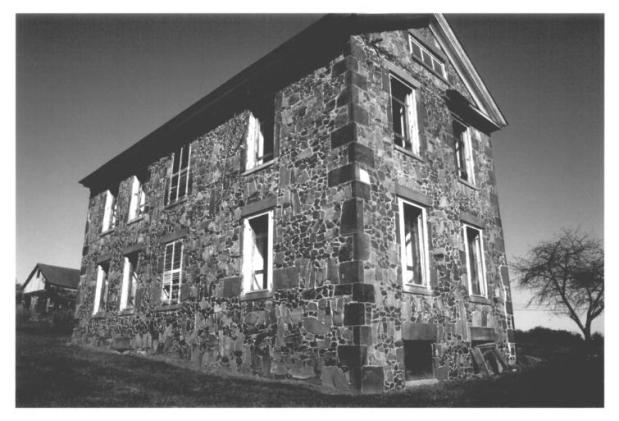The Oliver Filley House in Bloomfield, Connecticut, is a two-story farmhouse designed in the Greek Revival style. Built in 1834, the house is of stone construction (using local sources) and represents one of only four stone houses built in Bloomfield in the early 19th century. Thanks to its unique construction and well-preserved features it currently resides on the Connecticut State Register of Historic Places.
Captain Oliver Filley built the house for his son, Jay Humphrey Filley, and Jay’s wife, Julia Newberry. Oliver’s father purchased the land on which the house still resides, leaving it to Oliver and Oliver’s mother upon his death in 1795. Oliver lived on the property when he married his wife, Annis Humphrey, in 1805.
During this period, Oliver ran a successful tinware shop. Joined in the business by numerous relatives, his products found their way to markets all along the East Coast. Oliver went on to serve in the War of 1812, during which he earned the title of “Captain.” Shortly after returning, he relocated to a house on Brown Street. Oliver’s previous residence remained under his ownership, however, and he used the land to build the house for his son and daughter-in-law in 1834.
Jay Filley did not take to the tin business the way his father did and instead used the property to grow tobacco—a crop that later became an important part of the economy in Bloomfield. After Oliver’s death, Watson Wilcox bought the property in 1849. Five years later, Amasa Holcomb purchased it and immediately sold it to Samuel Pinney. The Pinney family maintained ownership over the house and land until selling it to the Missionaries of Our Lady of LaSalette, a Roman Catholic order, in 1913. They used it for agricultural purposes throughout much of the 20th century.
The town of Bloomfield purchased the property in 1992 and, shortly after, the Wintonbury Historical Society signed a lease with the town allowing them to restore and display the property to the public. Today the Society works diligently to restore and preserve both the house (which still resides on the land purchased by the Filley family) and its surrounding buildings and landscaping—ensuring the survival of a unique piece of Bloomfield’s history.










